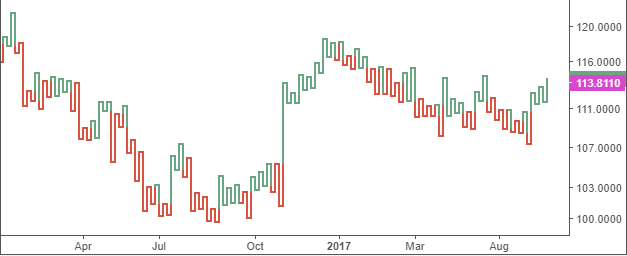

According to the Cellular Telecommunication and Internet Association, there are 30 facilities-based wireless service providers in the US. The top three of them hold more than 80% of the cellular network market share. Air transportation is a thriving industry, taking millions of people to locations around the globe. Between 2009 and 2019, the global aviation industry’s revenue grew at a CAGR of 5.3%, reaching $838 billion in 2019.
It shares with companies like Nestlé, Pepsico, Kraft, P & G, Unilever, Mars and J & J, the food products oligopoly. It has great influence in the market of sweet biscuits, salads and sweets. It controls 75 brands and occupies a privileged position in the sector of edible and hygiene products.

The firm cannot estimate the sales when it decides to reduce the price of its product. The most striking feature of Oligopoly market is the interdependence of the firms operating in similar industry. Since the products of oligopolist are close substitute, the price and output decisions of one will surely affect the other firm’s pricing and output decision. The oligopolist has to take into account the actions and reactions of his rivals while deciding his price and output policies.
It may be defined as a market situation in which only a few producers affect the market. Globally, in 1984, US-based AT&Ts local telephone service was broken up into seven Baby Bells, giving consumers access to more choices and lower prices. However, by 2018, most of the Bells were together again as a single company called AT&T, which is currently the worlds largest telecommunications firm. Interestingly, the Oligopoly Market demand is marked by kinked demand curves. Therefore, oligopolists maximize profits by balancing marginal revenue with the marginal cost of the concerned product. So, an oligopoly is an intermediate between a monopoly and free market competition.
Characteristics of Oligopoly
They start as small organizations but gradually they cover almost the entirety of their sector. In the modern era, there exist different market strategies such as monopoly and duopoly. But whether they tilt the balance in the market in their favour only time will tell. The process of consolidation would be expedited once the suspension of the insolvency law is lifted in March and more bankrupt companies come up for sale.
Since TATA Steel, JSW, and SAIL own the majority of the steel market, they have power over how its priced and distributed. On the other hand, HAL manufactures planes for the Indian military. Monopolies exist in industries that are capital intensive with multiple barriers to entry.
In our day to day life, if we focus on the latest victories and failures instead of seeing our lives as a whole, we are vulnerable to fate’s whims and get frustrated easily. The question still remains is how is this related to the oligopoly and oil and gas industry. Well, in petroleum industry it has always been about the big picture. This industry has seen ups and downs in the prices for period of every 5-10 years, along with some disastrous events.
The economic arrangement is the primary means that will help get a level playing field. But at the same time, from the examples mentioned above, we can conclude that oligopoly is not conducive to healthy competition. The downfall of the US automobile sector is a burning example discussed in example three related to the automobile sector.
“Our approach is calibrated in nature, so that intervention remains effective and targeted; it does not restrain innovation and would in turn help the market to regulate itself.” Then there is Asian Paints in the paint segment with 40 per cent market share. The firms collaborate with each other and control the product output and Market price for the product.
- Pepsi also has also doubled distributors, cooling capacity and even the number of vehicles in rural areas.
- Usually, the leader is the first to make technological breakthroughs, set prices, and dictate development direction to other market participants.
- The largest or lowest-cost or most aggressive firm will often emerge as the price leader.
- In spite of increasing demand, the oligopolistic nature of the cement sector gives manufacturers the ability to calibrate prices by controlling supply.
Perhaps nobody knows, but almost everyone has made use of the products of this Japanese company ever in life. Better known as P & G, its situation is similar to that of other companies mentioned above. It has a total of 300 different brands, with which it distributes its goods across the globe. It maintains a dominant oligopolistic position with 22 brands of foodstuffs and great world distribution.
Airlines
Let’s take an example of a company that enters the market with a brand new technology There is very less friction from peers as there is less competition in that segment. In oligopoly product of the various firms is more or less the same. Therefore if a new company enters the market with the same product, existing organizations decrease their product’s price more than the average price which results in natural barrier for the new entrant. This is because, in this case, as the firm decreases or increases the price, its product becomes neither relatively cheaper nor dearer. Therefore, now its demand curve would be less elastic, or steeper, than dd’—now the demand curve would be like DD’.
Is being used in innovations, this suits companies with high R&D costs. There are certainly many other oligopolies and industries to examine. In fact, oligopoly almost certainly exists in some form in every capitalistic nation in Earth, so there are plenty of other case studies to understand how they operate.
The new oligopoly is made up of multinational corporations that have chosen specific product or service categories to dominate. In each category, over time, only two to four major players prosper. Starting a new company in that market segment is difficult, and the few that do succeed are often gobbled up or run out of business by the oligopolies. Oligopolies that follow a price leader do not engage in price competition, but they still contest for market share with a variety of forms of non-price competition. Pepsi and Coke each spend billions on TV ads designed to entice the consumer to switch cola brands. Some of the most notable oligopolies in the U.S. are in film and television production, recorded music, wireless carriers, and airlines.
Similar to Oligopoly Example – Indian Airline Industry (
It is designed in such a way that a single firm can execute selfish behavior or profit-maximizing behavior. If it does, it automatically goes against the fundamentals of an oligopolistic market. In this strategy the industries are allowed to sell their product through a centralized syndicate.
Coca Cola
Unsurprisingly, there are many music companies in the world; however, three are considered the largest. These are Sony Music, Universal Music Group, and Warner Music Group. These three are also considered as ‘Big three’ of the music industry, which is enough to show the oligopolistic nature of this industry, and their combined revenue is over $20 billion. Nowadays, people are opting more for online streaming services over downloading their music. Thanks to this phenomenon, services like Apple Music and Spotify are quickly becoming the go-to choice for music.
Therefore, demand curve of any firm would have a kink at the prevailing price of the product. Oligopoly, then, is a compromise – a social adaptation to powerful technological trends. So we have accepted a set of economic rules that limit price competition but still seem to result in competition over product and production process development. Technology forced firms to become bigger, yet that very bigness put them at such risk that they had to become even bigger in order to control prices. It does not matter what the job is, in present times, a computer is a necessity.
Oligopoly is a situation in the economy when several companies produce similar products. This model is considered the best option for several oligopolists, allowing each to get the maximum profit. Cartels allow companies to operate as if there is a monopoly in the market. Together, they can prevent new players from entering the market. Usually, the leader is the first to make technological breakthroughs, set prices, and dictate development direction to other market participants. After that, the rest of the companies follow the leader, making the market look pretty consistent.
The firms are supposed to employ aggressive market techniques to defend the competition in the market. Due to interdependence, it is essential for the forms to invest a huge amount in the marketing oligopoly examples in india and promotional activities. Thus, advertising has a great importance in an oligopoly strategy. It is the opposite of partial oligopoly and no particular industry or firm dominates the market.
The company founded by John Rockefeller In 1870 was one of the first dedicated to the oil refinery and another one that gave rise to the idea of monopoly. This Italian corporation is one of the great producers of spectacles of the world. Although many people do not know, it is very likely that they have used their products. Companies with Monopoly and oligopoly Have existed throughout the history of capitalism.
Here the entry of new or other industries into the market is strictly banned. Recently, the US Federal Trade Commission, an independent consumer protection agency, has sought the break-up of Facebook, asking it to sell Instagram and WhatsApp. It alleges that Facebook buys out rivals to curb competition and kills start-ups that it cannot buy by limiting access to its tools. Being a dominant social media player, Facebook’s failure to curb fake news and hateful content have also invited a lot of criticism across the globe as well as in India.